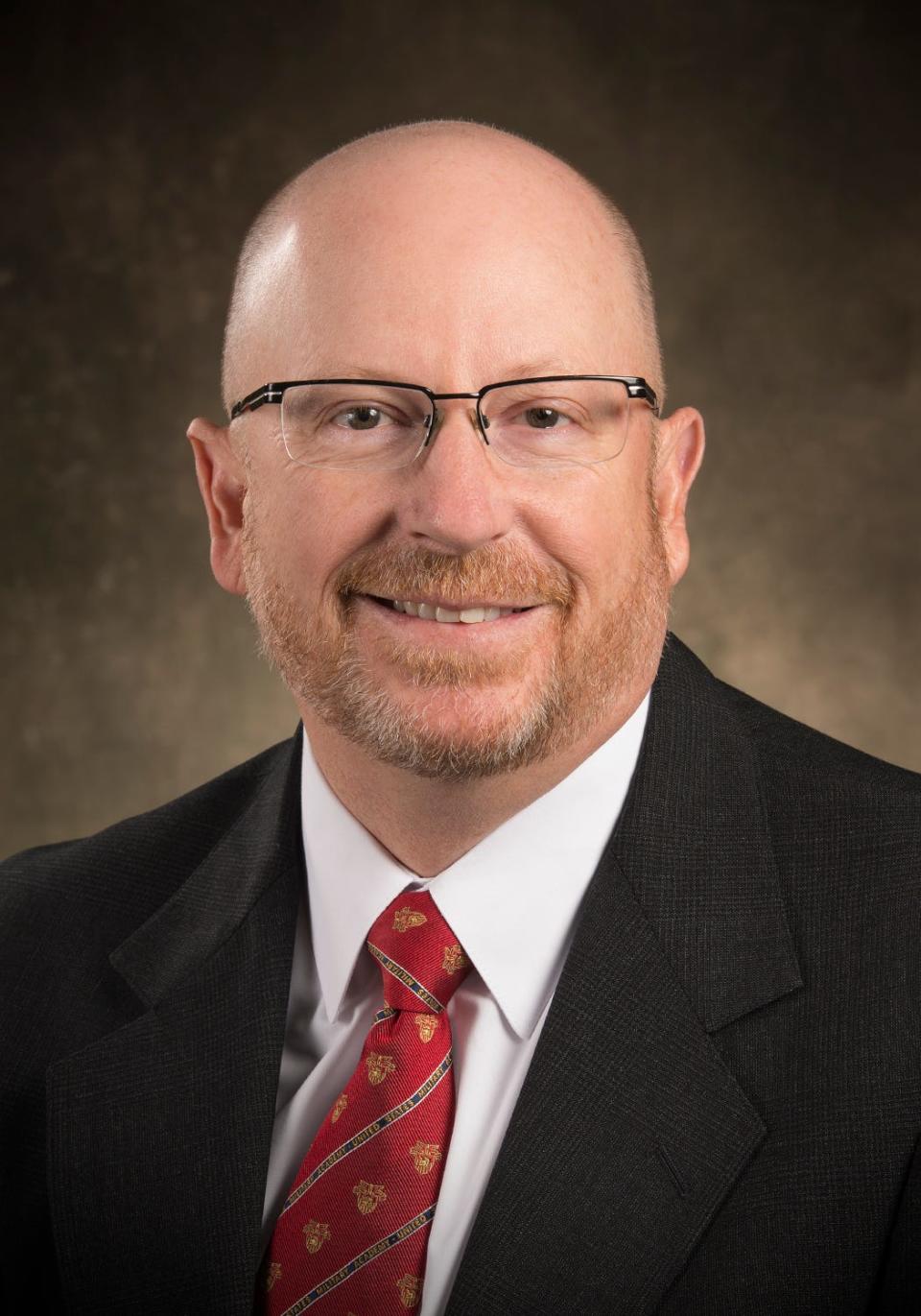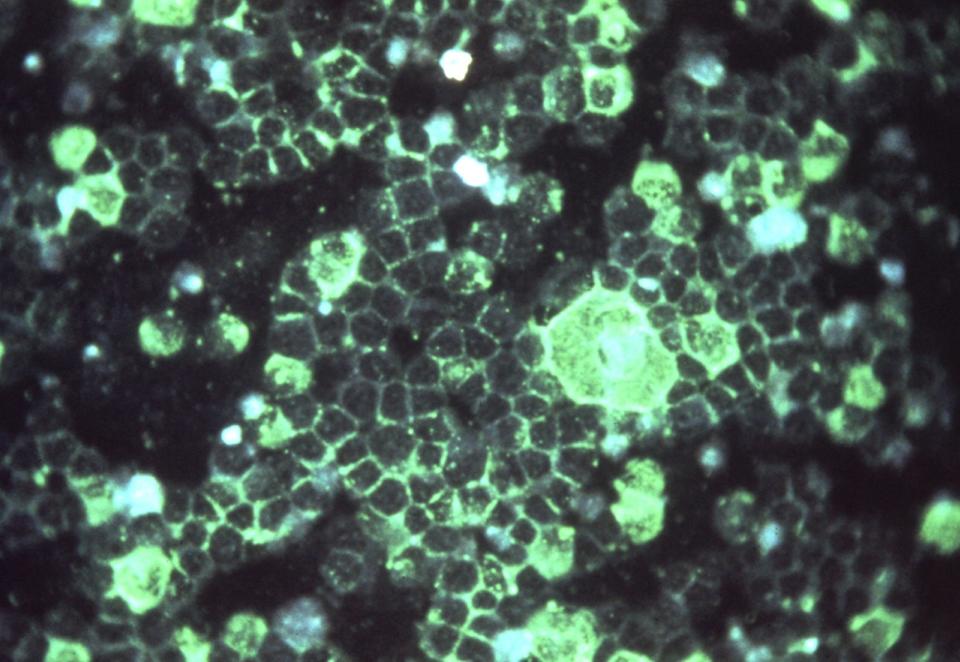RSV: Virus has hit kids hard in some parts of the country, but not in San Juan County
FARMINGTON – A common respiratory virus known for affecting infants and the elderly more seriously than other age groups has not made a big surge in San Juan County, but that virus has become unexpectedly rampant in other areas of the country.
While the virus known as RSV is usually most actively spread starting in December, this year federal health officials say it made an early appearance and, in some areas, it is causing a crisis for health care workers. The outbreak has surprised and alarmed medical teams in some regions as many pediatric patients are showing up in some emergency rooms needing in-hospital care.
That’s not the case in San Juan County, where Pediatric Hospitalist Dr. Brad Scoggins said San Juan Regional Medical Center is treating two children who have the virus and need inpatient care.
“We’ve had a little spike in bronchiolitis, mostly rhinovirus,” Scoggins said, noting that June and July brought higher-than-usual numbers of respiratory illness cases.
As for the situation this month, Scoggins said, “this is not atypical of a pre-pandemic year.”

SJRMC's Chief Medical Officer Dr. Robert Underwood noted there were no reported cases of RSV in October 2019, but he said that doesn't necessarily portend an increase in local cases later this year, especially due to a disruption in virus transmission patterns due to pandemic precautions exercised by many since 2020.
Underwood said he recently spoke to a colleague at an East Coast hospital who had seven RSV cases among the facility's pediatric patients. Sometimes, he said, an illness outbreak will begin in coastal areas and migrate inland over time.
"I don't know if we're going to avoid it," he said.
The New Mexico Department of Health web page that monitors influenza infections listed the northwest corner of New Mexico as a low-risk area for respiratory illnesses on Oct. 21.
What is RSV?
Health officials say washing one’s hands, covering one’s coughs and getting a flu shot to ward off influenza strains that can make an RSV infection worse are good practices, but the virus is very contagious, and the flu shot will not stop RSV.
The federal agency tracking its activity said on its website that RSV “is the most common cause of bronchiolitis (inflammation of the small airways in the lung) and pneumonia (infection of the lungs) in children younger than 1 year of age in the United States.”
“Respiratory syncytial virus, or RSV, is a common respiratory virus that usually causes mild, cold-like symptoms,” according to the Centers for Disease Control and Prevention (CDC). “Most people recover in a week or two, but RSV can be serious, especially for infants and older adults."
In its updates for the week ending Oct. 15, the CDC said on its flu-tracking web page that some areas of the country are seeing a lot of respiratory illnesses, including RSV.
“Early increases in seasonal influenza activity have been reported in most of the United States, with the southeast and south-central areas of the country reporting the highest levels of activity,” the website said.
No alerts about the virus were found on the state health department’s website Oct. 21.
The New Mexico Pediatric Society website, however, noted the rise in RSV cases
“RSV positive cases have been increasing in New Mexico and the NMPS Pediatric Council has been in communication with the pediatric infectious diseases (ID) department at UNM and the neonatal intensive care units (NICU) at Presbyterian and UNM,” the group’s website stated.
The Albuquerque Journal reported on Oct. 25 that University of New Mexico Children’s Hospital is following a "surge plan" as pediatric RSV patients have passed bed capacity in its pediatric care unit.
The New Mexico Department of Health noted in a 2016 conference presentation on establishing a surveillance network for the virus that the virus is almost certainly underreported.
Individuals dealing with the virus also incur a “great cost” as between 2% and 12% “of admitted cases require intensive care unit admission,” the state presentation stated.

Is RSV contagious? How do you catch it?
Someone who has the virus can spread it through coughing and sneezing, spreading virus droplets. It can also be caught if an uninfected person touches a surface that has the virus on it, and the virus gets into the body via the eyes , nose or mouth.
“People infected with RSV are usually contagious for 3 to 8 days,” the CDC stated. “However, some infants, and people with weakened immune systems, can continue to spread the virus even after they stop showing symptoms, for as long as 4 weeks.”
The CDC says that RSV can survive for several hours “on hard surfaces such as tables and crib rails. It typically lives on soft surfaces such as tissues and hands for shorter amounts of time.”
Treating and preventing the spread
Dr. Scoggins of San Juan Regional Medical Center said the hospital has adopted protocols for assessing which pediatric patients are admitted that have cut down on unnecessary hospitalizations.
Doctors everywhere, however, continue to study better ways to treat patients who have severe complications from virus that can’t yet be cured by a medicine.
“That is a question that has probably haunted pediatricians for six or seven decades,” Scoggins said. “It’s a very difficult disease to treat.”
Depending on the patient, a mix of supplemental oxygen and treatments and using nebulizers can help make patients more comfortable, and hydration is also a key to recovery, he said.
Common cold and flu precautions, like washing one’s hands and staying away from others if one has cold and flu symptoms, can help prevent the spread of the virus, national health experts said.
The CDC cited schools as a common place for the virus to spread to kids and then into families.
Is there an RSV vaccine?
While there is no approved vaccine yet, both Scoggins and the CDC noted one approved drug that could keep some young children at high risk of getting very sick from developing a more serious case.
“A drug called palivizumab is available to prevent severe RSV illness in certain infants and children who are at high risk for severe disease,” the CDC website noted. “This could include, for example, infants born prematurely or with congenital (present from birth) heart disease or chronic lung disease.”
The drug is also known by the brand name Synagis.
While it can help limit the severity in some cases, the CDC said it won’t help in already severe cases, it isn’t a cure and it can’t prevent an infection from happening.
Advice from a doctor
A doctor at Hartford, Connecticut’s Connecticut Children’s Medical Center, a facility that is hard hit by an influx of young RSV and flu patients, explained the differences between RSV and influenza and gave tips for concerned parents in an article he wrote Oct. 17 for the hospital website.
“Unfortunately, there is no RSV vaccine for the general public at this time. So, think back to all the strategies you pulled out of your toolbox during the many waves of COVID-19: wash hands, mask up when necessary and wipe down surfaces,” wrote Dr. Juan C. Salazar, MD, MPH, FAAP.
By the numbers
According to the Centers for Disease Control’s RSV surveillance web page, RSV leads annually to approximately:
2.1 million outpatient (nonhospitalization) visits among children younger than 5 years old.
58,000 hospitalizations among children younger than 5 years old.
177,000 hospitalizations among adults 65 years and older.
14,000 deaths among adults 65 years and older.
100 to 300 deaths in children younger than 5 years old.
Disease forecasters stumped about infection patterns
Regular seasonal patterns, wherein early fall is the slow beginning of the annual surge in RSV cases and December begins the usual high point, are no longer being seen, the CDC noted using statistics from 2021.
“Prior to 2020, seasonal patterns for RSV in the United States were very consistent,” the CDC stated. “However, the patterns of circulation for RSV and other common respiratory viruses have been disrupted since the start of the COVID-19 pandemic early in 2020. Beginning in the southern region of the United States, RSV circulation began to rise in the spring months of 2021. …It is too soon to predict when the previous seasonal patterns will return.”
One doctor in Texas said his hospital is feeling the impacts of RSV and other viruses that are making kids sick.
“We are continuing to see a very high number of sick children with various respiratory problems,” Dr. Stan Spinner, vice president and chief medical officer of Texas Children’s Pediatrics and Texas Children’s Urgent Care in Houston, told USA TODAY earlier this month. “It was already pretty high before school started, but it has clearly gotten worse and faster than it typically takes.”
Health experts say most hospital admissions are dominated by respiratory syncytial virus, rhinoviruses and enteroviruses, which mostly cause cold-like symptoms, including a runny nose, sneezing, coughing and a fever.
A growing number of young children are going to the emergency room this year, as they lack immunity from prior infection, Dr. Elizabeth Schlaudecker, clinical director of the Division of Infectious Diseases at Cincinnati Children’s Hospital, recently told USA TODAY.
“A lot of children everywhere are getting these viruses for the first time in rapid succession,” she said. “It’s a strain on the health care system because some of these kids are more sick or require medical attention.”
Reporter Adrianna Rodriguez of USA TODAY contributed to the end of this report.
This article originally appeared on Farmington Daily Times: San Juan County hasn't seen RSV case surge seen in other states

